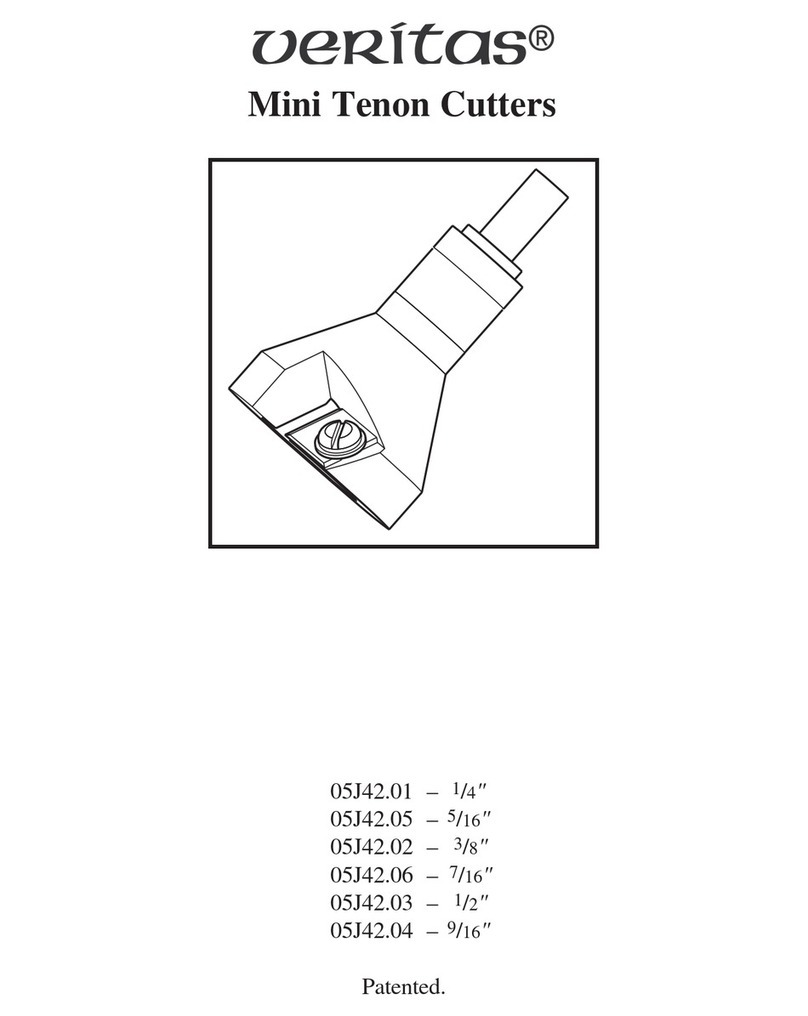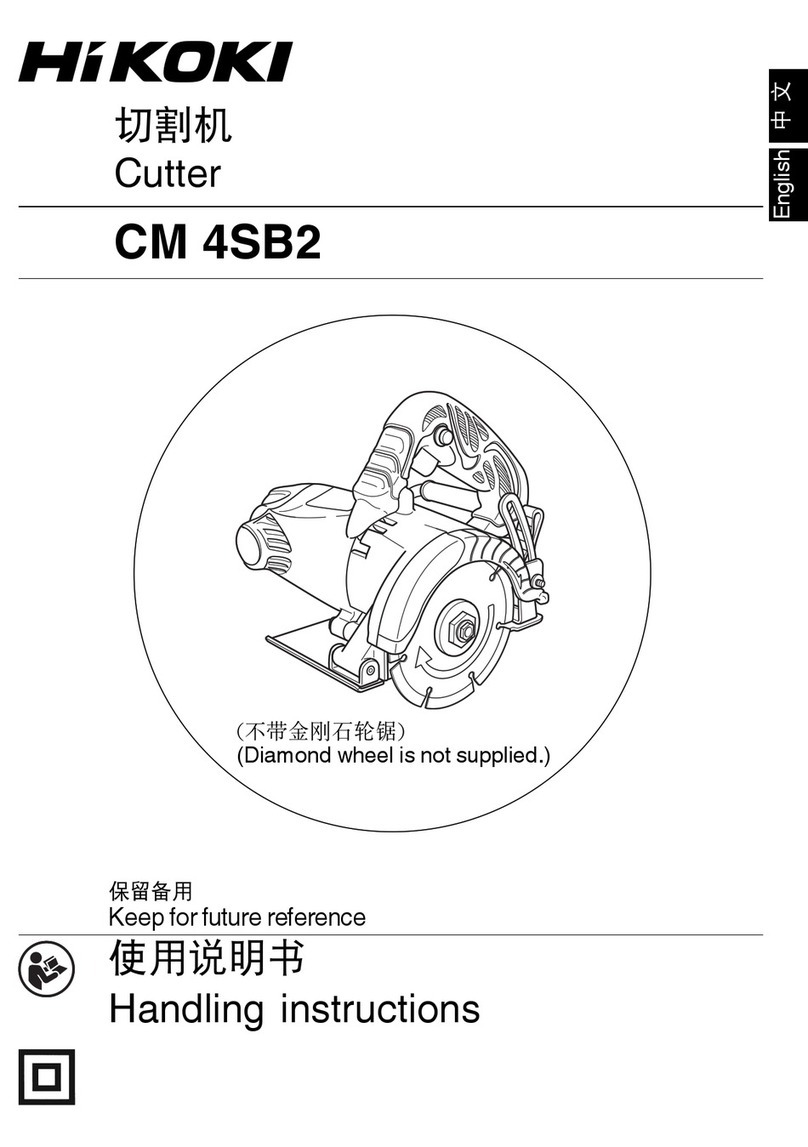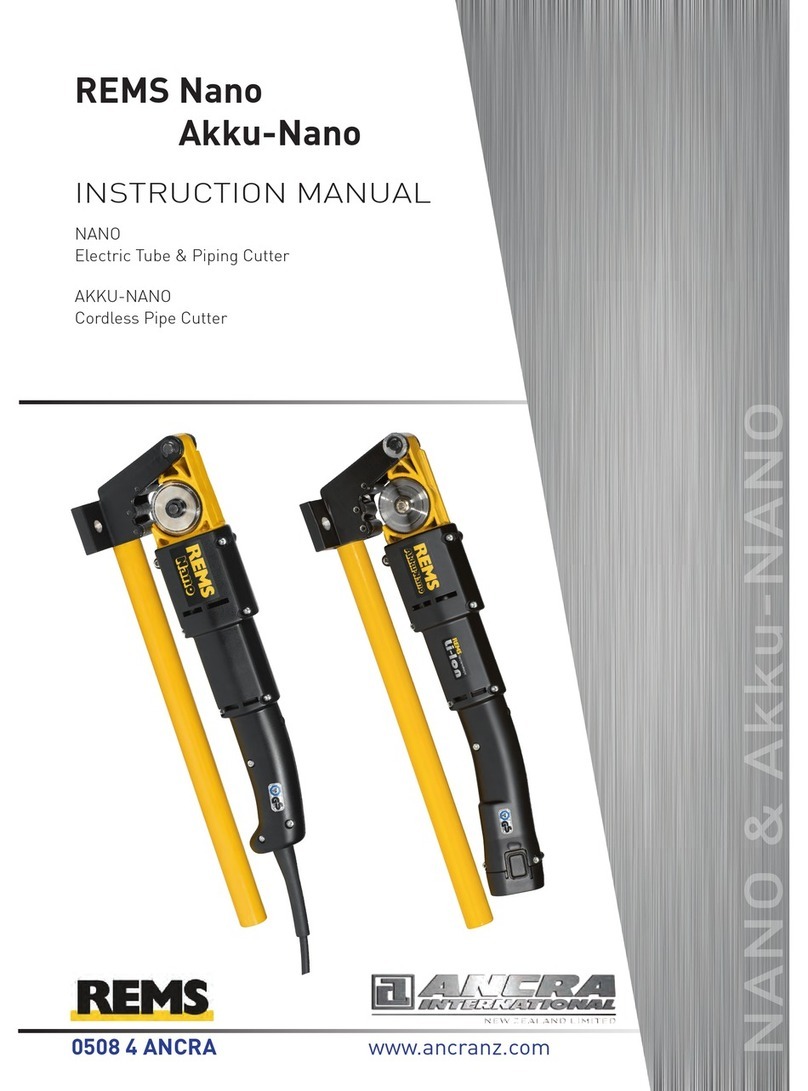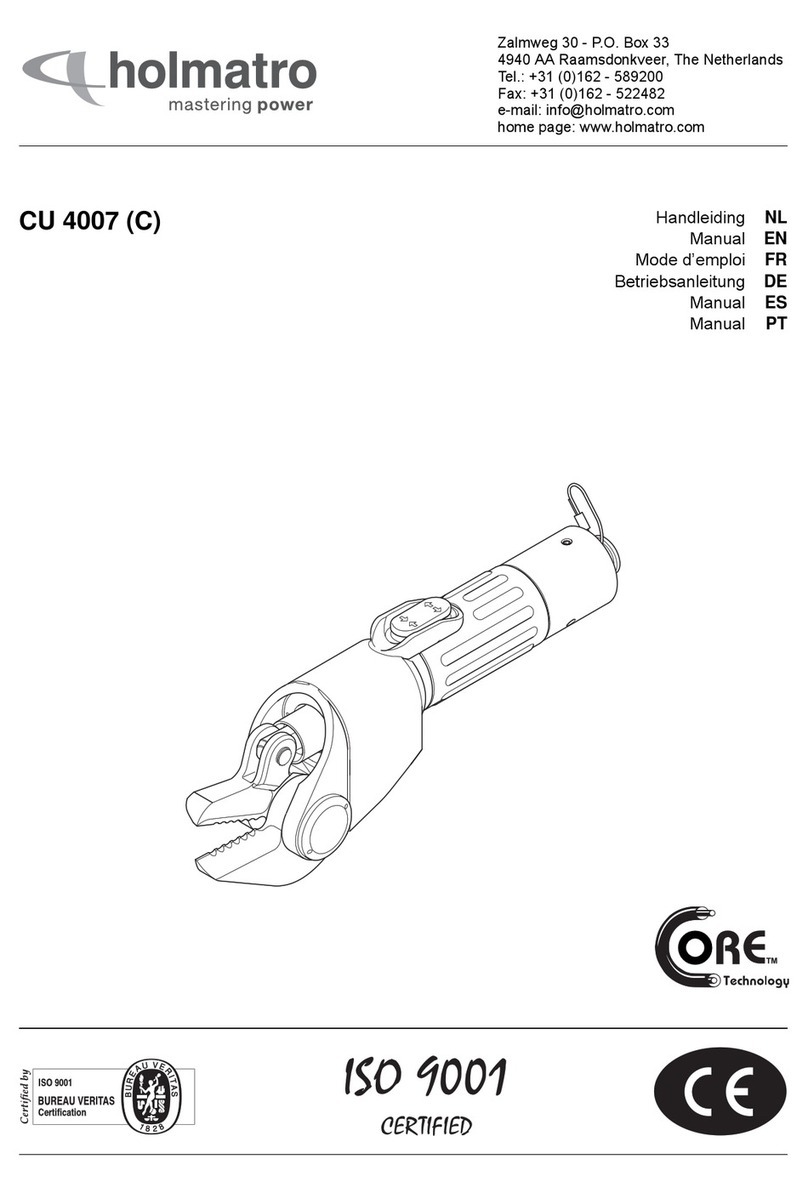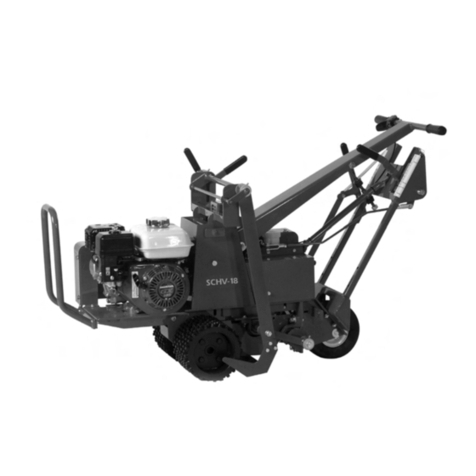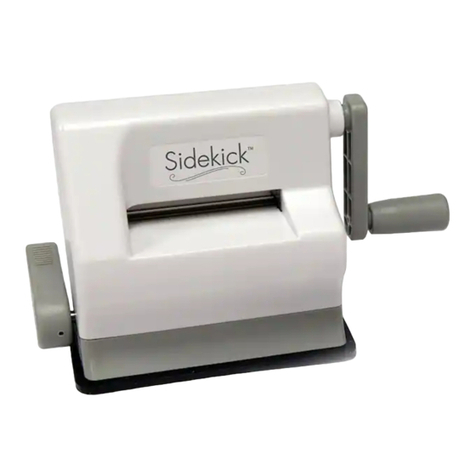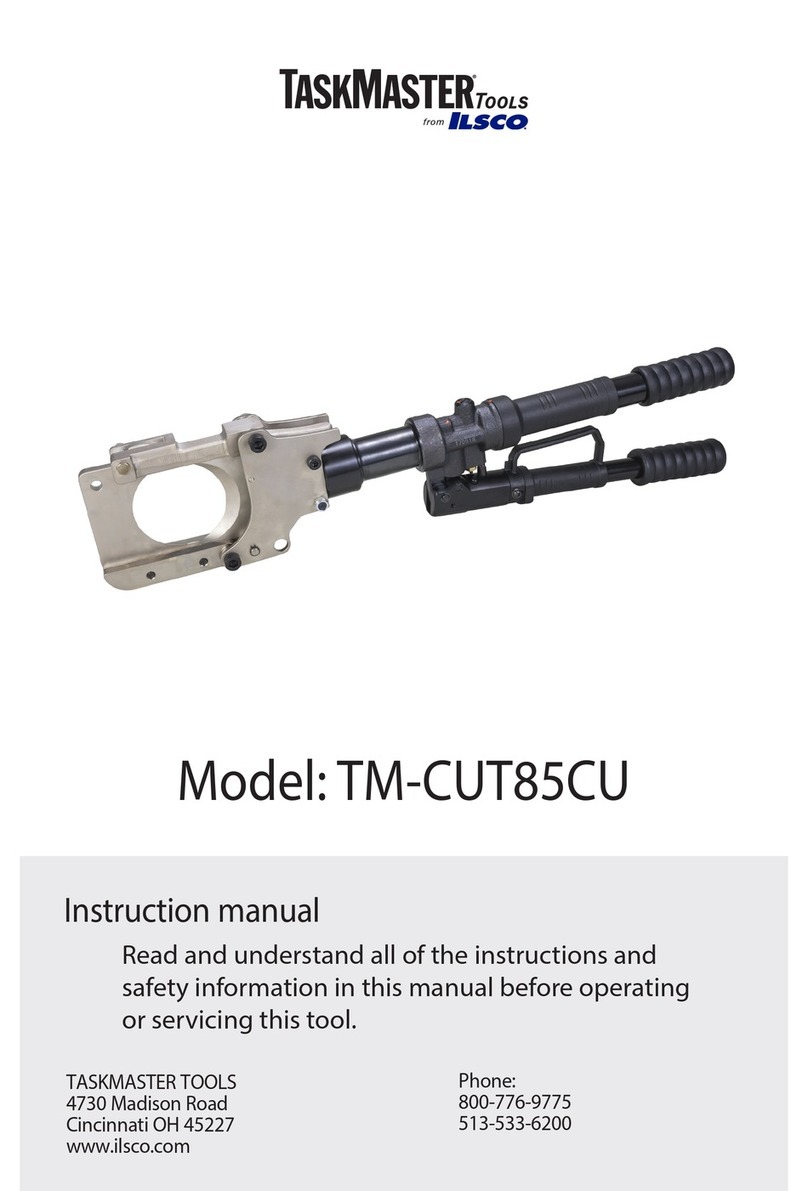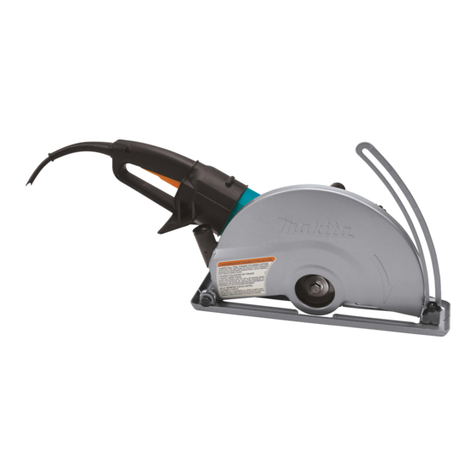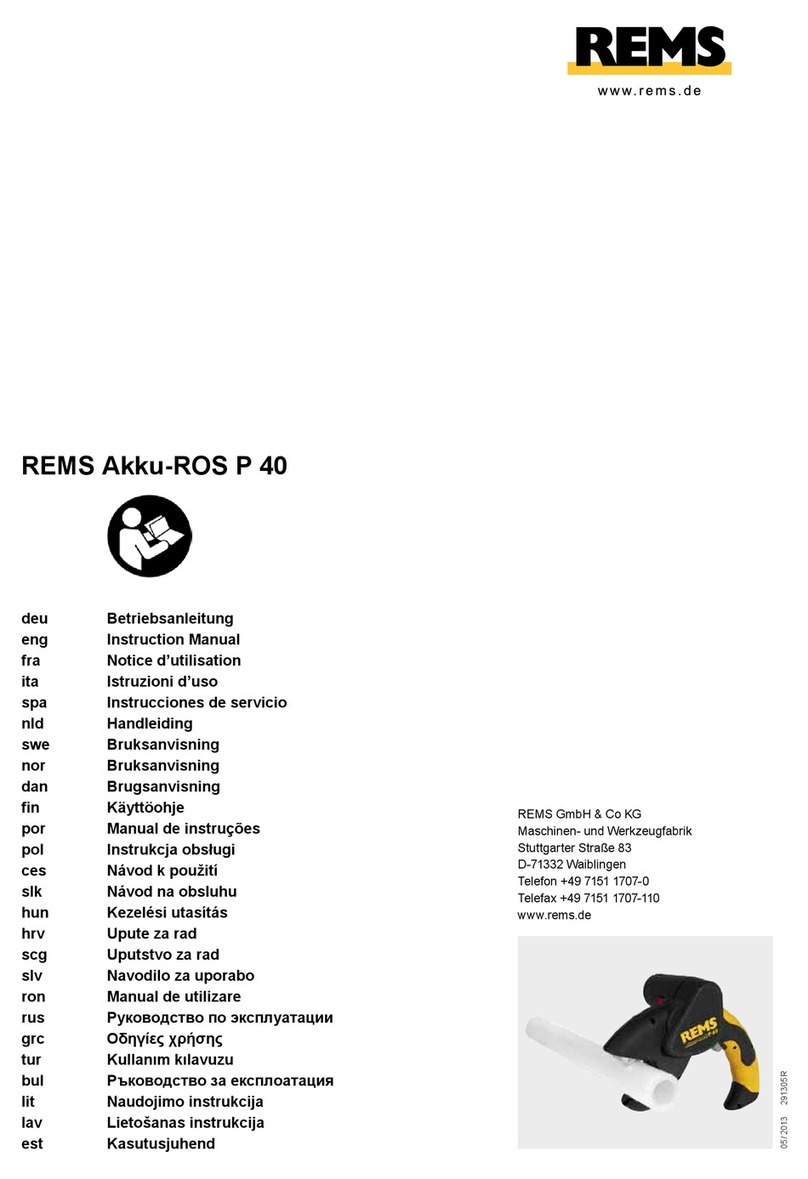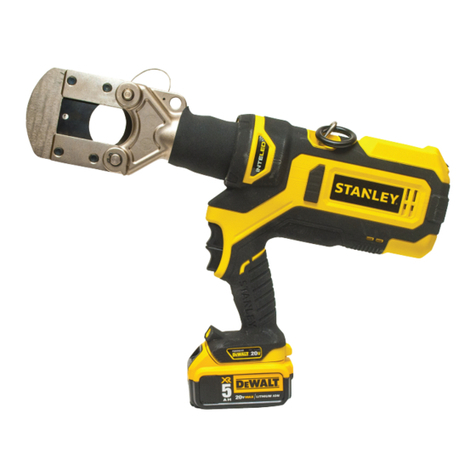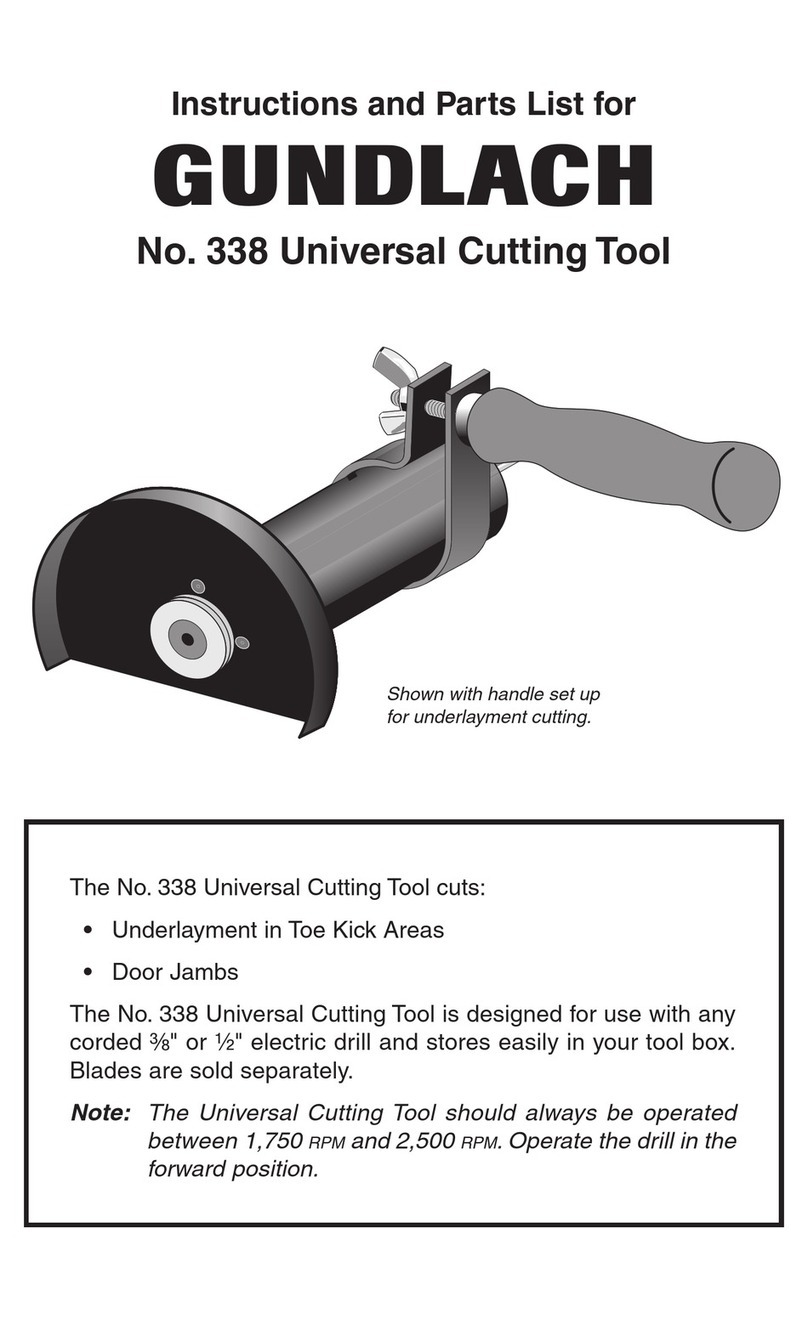Chicago Electric 8881 User manual

35 AMP Plasma Cutter
Model 08881
ASSEMBLY AND
OPERATING INSTRUCTIONS
3491 Mission Oaks Blvd., Camarillo, CA 93011
Visit our Web site at http://www.harborfreight.com
Copyright©2003 by Harbor Freight Tools®. All rights reserved. No
portion of this manual or any artwork contained herein may be reproduced in
any shape or form without the express written consent of Harbor Freight
Tools.
For technical questions and replacement parts, please call 1-800-444-3353.
TO PREVENT SERIOUS INJURY,
READ AND UNDERSTAND ALL WARNINGS
AND INSTRUCTIONS BEFORE USE.
REV 02/05

Page 1
Introduction
35 AMP Plasma Cutter is an inverter-based power source designed for the plasma cutting of metals, especially in
medium and light steel structural works. It is equipped with a arc restart device which allows thecontinuous cutting of
punched plates and grids. Its special design, totally based on electronic controls, offers the following advantages:
•cutting current stability in spite of mains fluctuations
•cutting current stability in spite of cutting arc length
•compact design if compared to a traditional machine
Prevention against electric shocks
Before connecting the power source to the mains, always check that:
•the voltage received falls within ±10% allowance of the nominal value displayed on the machine plate;
•the mains input is properly grounded (as provided in the relevant legislation) and the yellow/green wire of the
welding machine is connected to the ground;
•the mains supply is equipped with a grounded neutral conductor;
•the power source is in a dry and ventilated place.
When using the machine, make sure that the following precautionary measures are taken in the workplace:
•ensure that no metallic body may accidentally get into contact with the power cables;
•do not carry out any welding operation in damp or wet areas;
•ground any metallic parts falling within the operator’s reach;
•keep all flammable materials away from the working· area;
•connect the work return lead of the cutting circuit to a place as close as possible to the cutting area in order to
minimise the current path and the relevant risks;
•make sure that cutting torches and cables are in perfect condition.
WARNING! Since the operating voltage in a plasma cutting circuit may range between 100V and 500V (vs.
10÷100V in a welding circuit) special attention should be paid to the maintenance and wear condition of
cables and torches. Non-insulated parts of the torch should never be touched as they represent a serious
danger of electrocution.
Furthermore, the operator should stick to the following behavioural rules:
•do not connect plasma cutting machines in series or parallel;
•in the case two or more cutters should operate on electrically connected parts, it is suggested that they work at a
suitable distance from each other and that none of them touches two torches at the same time;
•do not place the torch on metallic surfaces: this might be a condition for the machine to be started accidentally;
•always wear insulating garments.
In the case the power source should be introduced into areas characterised by a high risk of electric shocks, it is
recommendedthattheconnectiontothemainsbeprotectedbyahighly-sensitivedifferentialcircuitbreaker(releasing
current: 30 mA, operating time: 30 ms).
Such areas are:
A) places offering limited freedom of movement and preventing the operator from standing while working;
B) places surrounded by conductive surfaces that may accidentally come into contact with the welding circuit;
C) wet, damp and hot places.
Prevention against UV rays, fumes and fires
Arc cutting is a cutting process by which UV rays are emitted. Operators should therefore protect their eyes and faces
with suitable face masks or helmets equipped with adequate filter lenses.
Recommended DIN protection grades for filter lenses are listed below for plasma cutting procedure in relation of
current used:
•grade 11 - up to 150 Amps
•grade 12 - from 150 to 250 Amps
•grade 13 - over 250 Amps

Page 2
Operators should wear gauntlets, insulating shoes and fireproof clothes to protect themselves from radiation, slags
and sparks.
ReflectionandtransmissionofUVrays inworkplacesshouldbereduced byusingantiflashweldingscreensorpanels.
In order to reduce the toxic action of cutting fumes, it is suggested to operate in ventilated areas. Use fume extractors
close to the cutting area, if ventilation is poor or lacking.
If the piece to be welded is covered by chemicals (solvents, paints, etc.), it should be carefullycleaned prior to welding
to prevent toxic gas emission.
It is strictly forbidden to plasma cut on fuel tanks, whether they are full or empty.
Maintenance
Any repair work or replacement of spares should be carried out by skilled personnel, qualified to operate on
electromechanical systems.
Welders are allowed to remove the side panels of the welding machine (after disconnecting it from the mains) only to
remove any dust or dirt that may have been taken in. Such operation, to be carried out by applyinga compressed air
jet,is to berepeatedatleasteverythreemonths.This frequency should beincreasedifoperating invery dusty places.
Electromagnetic compatibility (EMC)
Cutting machines are conceived for use in industrial applications only. If they are used differently (e.g. for domestic
use), they may cause compatibility problems, as they may interfere with other electrical appliances operating in the
vicinity (radios, phones, computers, etc.).
It’s the user’s responsibility to install the power source and use it in the proper places so that no EMC problems may
arise. When judging the suitability of a workplace, the presence of the following should be considered:
•telephone lines and sets
•receiving and transmitting radio/TV sets
•computers and control devices
•safety devices
•measuring instruments.
Special attention should be paid to people with pace-makers and similar bio-electronic devices since they may be
influenced by electromagnetic fields. These people are strongly suggested to keep away from any places in which
cutting is going on.
Plasma cutting: procedure and technical data
Plasma is the high temperature (around 10,000°C), ionized gas generated by the electric arc during any welding
process. In the plasma cutting process the ionized gas is constricted at high speed (over 1,000 m/s) through the torch
nozzle. The nozzle and electrode constrict and maintain the plasma jet. The cutting operation is therefore the result of
the following combined actions:
•the temperature of the plasma arc melts the metal, pierces through the workpiece and
•the high speed gas flow removes the molten material
Thespecial shape ofthe torchnozzles attainsmaximum arcconstriction soas tominimize cuttingwidthand maximize
cutting depth.
The basic plasma cutting system consists of:
•a DC power source
•a compressed gas source
•a pressure reducer
•a plasma cutting torch
The arc is started with the help of a high frequency
generator. Energy transferred from the HF starter to the gas
causes the ionized gas to create a current path between the
electrode and the nozzle, and a resulting cutting arc is
formed.

Page 3
Plasmacuttingprocessisused as an alternativeto the oxyacetylene cutting processwhen cutting mild steel, whereas
it is essential for cutting stainless steel, aluminium and its alloys, as well as other non-ferrous metals.
Air is the most widely used plasma gas, probably due to the fact that compressed air is relatively cheap and readily
available at virtually any location. There are may different plasma and shield gas combinations (e.g. argon, nitrogen,
hydrogen and their mixtures) which can be used to enhance the cut performance on different materials and
applications, but they require the use of special water-cooled torches.
The table illustrate, as an indication, the relation existing among
current output, workpiece thickness (mild steel in this example)
and cutting speed. Purely as an indication, it can be stated that
aluminium workpieces that can be cut are roughly the same
thickness as mild steel, whereas in the case of stainless steel
thickness is reduced by about 30%.
Set up
The safety rules reported in the preceding sections should be carefully followed when setting up the machine.
Connect the power cable to a suitable power socket and insert a delayed-action fuse.
Make sure that the yellow-greenwire, whichis the earthwire, is properlyconnectedto theground (thiswill protect the
user).
To start up the machine follow these steps:
•Place the unit so that the vents are clear of any obstruction to ventilation air. Keep it in a dryplace and at a distance
of at least 0.5 m from walls, shields or anything.
•Make sure the machine is off.
•Connect the compressed air hose to the regulating filter connection on
therearpanelofthemachine.Adjustpressure by turning the regulating
filter knob and set it to 44-58 PSI. To do this, the filter knob should be
pulled until released and turned either clockwise or anticlockwise to
respectively decrease or increase pressure; after setting pressure, the
filter knob should be pushed until released.
•Connect the work return lead to a clean area of the workpiece.
•Screw out the torch outside nozzle, turn on the machine and make sure the pressure of the torch trigger does not
operatethepowersource:i.e.thesolenoidvalveisnotopenedandthehighfrequencygeneratoris notstarted. This
confirmsproperfunctioningofthetorchsafety.Afterthischeck,thetorchoutsidenozzlecanbescrewedinagain.
•Make sure the compressed air used for cutting is free from oil, moisture, dust or any other polluter. Compressed air
can be adequately cleaned if special filters are installed on the compressor outlet in addition to the one present in
the compressor. Dry and clean air ensures better cut quality.
Notice:
In order to prevent the torch or its parts from serious damage, always use original spares.
Current output 30A
Cutting Speed (INOH/MIN) Thickness (in.)
8" 0.35"
20" 0.28"
28" 0.22"
40" 0.18"
59" 0.14"
79" 0.10"

Page 4
Description of functions and controls
The controls of the machine are described here below with reference to the following figure.
Themachine is set towork byturning themain switchplaced onthe rearpanel toits ONposition. The green LED ‘1’ will
show when the machine is on.
Yellow led ‘2’ shows when thermal circuit breakers have tripped: this will stop the machine for some minutes to allow it
to cool down.
Red led ‘3’ shows when output voltage is available while cutting is in progress. It blinks when gascircuit breakers have
tripped, i.e. gas pressure has dropped under the minimum level necessary for cutting: this will stop the torch trigger
until the problem has been solved.
Switch ‘4’ allows the cutting mode to be selected out of three:
•NORMAL for full plates: cutting arc is started by pressing the torch trigger and bringing the torch into contact with
the workpiece; cutting arc will go off as soon as the torch trigger is released and/or the torch is detached from the
workpiece.
•GRID for grids or punched plates: if the torch trigger is kept pressed, cutting arc will automatically be restarted on
detection of metal to be cut; it will go off as soon as the torch trigger is released.
•SMART for full plates with improved end-of-cutting control: cutting arc is started by pressing and releasing the torch
trigger and bringing the torch into contact with the workpiece; by the end of the cutting operationthe torch trigger is
pressed again: this will bring current down to its minimum value allowing better control of the arc out of the
workpiece; cutting arc will go off as soon as the torch trigger is released again.
Air test button ‘5’ is used to check that the torch is able to deliver the gas necessary for cutting.
Potentiometer ‘6’ is used to adjust current output.
NOTES ON THE USE OF THE TORCH
Aplasma torch isheldatrightangletothe workpiece whenaverticalcutisdesiredor at anyother angle for slopingcuts
and bevels.
Cutting speed should allow the cutting arc to cut the material and protrude from the workpiece vertically or at a max.
angle of 5÷10° to the perpendicular.
When plasma is used to pierce a material, molten material ejection may deposit on the torch, thus causing abnormal
wear, especially with thickness over 10 mm. In these cases it is suggested to start piercing with the torch slightly
slanting so that the ejection of molten metal is directed outwards and the torch is preserved from damage and
overheating. The material deposited on the ceramic cap or on the nozzle should be removed immediately
paying attention to the high temperature of the workpiece and torch parts.
Circular cuts may be carried out by means of rotating head calipers sliding on rollers, with magnetic centering.

Page 5
The machine should not be switched off before the post-cut gas has flown completely, since this is necessary
to cool the torch.
In order to extend consumable life, both nozzle and electrode should be replaced when servicing a torch. The nozzle
should be replaced when the inner bore is irregular or greater than the nominal bore (this causes raking and poor
qualitycuts); theelectrode should bereplaced before thetungsten core ofthe electrode tipis totally worn out. The use
of worn parts may damage the torch body.
Particularcare should be taken in fitting the new parts into the torch so as not to irrevocably damage the torchbody.
Troubleshooting
A list of the possible failures of a 35 AMP Plasma Cutter generator is reported here below with the indication of the
possible causes.
A) If when starting the machine the green LED on the front panel is on but the machine does not cut, check that:
•the mains voltage ranges between 200V˜ to 260V˜
B) If the machine stops and the yellow LED ‘2’, when welding, shows for over 4 minutes, check that:
•theairflowforthecoolingofthe components is not hindered bydustor foreign objects placed inthe vicinity of the air
vents
•the fan is working properly; if its air flow rate is not enough, it should be replaced
C) If the gas flow suddenly stops, check that:
•the hoses and connectors are not clogged
•there is about 230Vac at the ends of the solenoid valve with the torch trigger pressed; if so, replace the solenoid
valve; if not, replace p.c. board 0050513
D) When the machine is switched on, the red LED ‘3’ blinks indicating insufficient air pressure:
•adjust air pressure until 44-58 PSI is shown on pressure gauge
•replace pressure switch.
3
4
5
6
7
1
2
Possible cutting faults
Fault Possible cause
Poor penetration Low current - Fast cutting speed - Excessively thick workpiece
Interruption of cutting arc Worn electrode, nozzle and diffuser - Elevated air pressure - Insufficient air quantity
delivered - Faulty pressure switch - Low input voltage
Torch nozzle overheating Insufficient air quantity delivered - Worn electrode
Too much slag on the
workpiece Inadequate air pressure - Worn nozzle - Slow cutting speed
Item Description Q.ty Part
number
1Clamp, TAU 1 10400010
2ERGOCUT 50 plasma torch 10621000
3Switch 10410170
4Electrode, PR17 10621001
5Air diffuser,PE07 10621003
6Hood, PD88-11 10621002
7Nozzle, PC03 10621004

Page 6
6
94 87
5
11
3
10 1215-16
191413
17-18-19-20
Spare parts for 35 AMP Plasma Cutter
Item Description Q.ty Part number (MP04)
1Handle 10020245
2Top cover 11550061
3Lower panel 11550036
4Front panel
Self-sticking serigraphy
1
1
1550011
0300405
5Anti-slip foot 40040170
6Cable clamp
Nut
Input cable, 3x14 AWG
1
1
1
0020236
0020237
0060501
7Switch 10040133
835A board, complete 10050180
9Front board 10050513
10 Knob, ø36 10040174
11 H.F. board 10050512
12 H.F. transformer 11800210
13 Fan 10070044
14 Air conveyor 10300378
15 Solenoid valve 10040291
16 Pressure switch 10020335
17 Pressure regulator filter 10020320
18 Pressure gauge 10020321
19 Regulator filter support 10020322
20 Connection, M5ø6
Connection, 1/4”-ø6 female
1
1
0020329
0020371

Other manuals for 8881
1
Table of contents
Other Chicago Electric Cutter manuals




